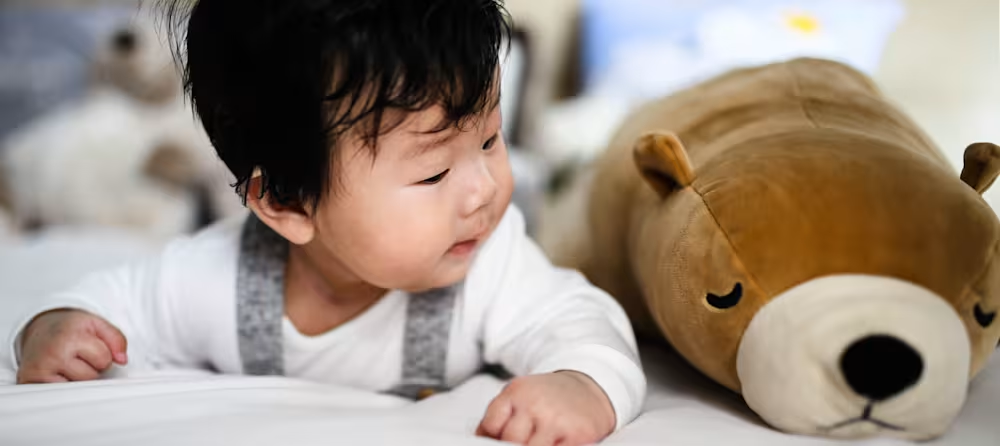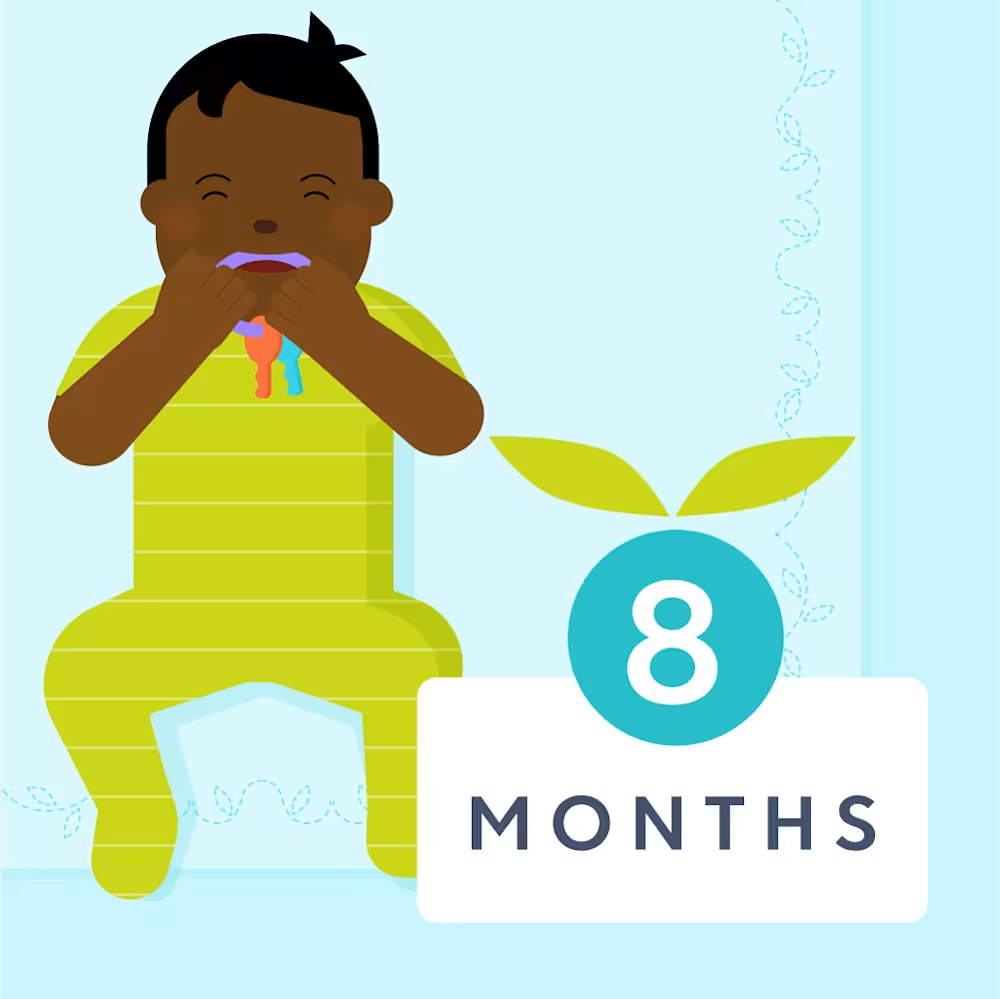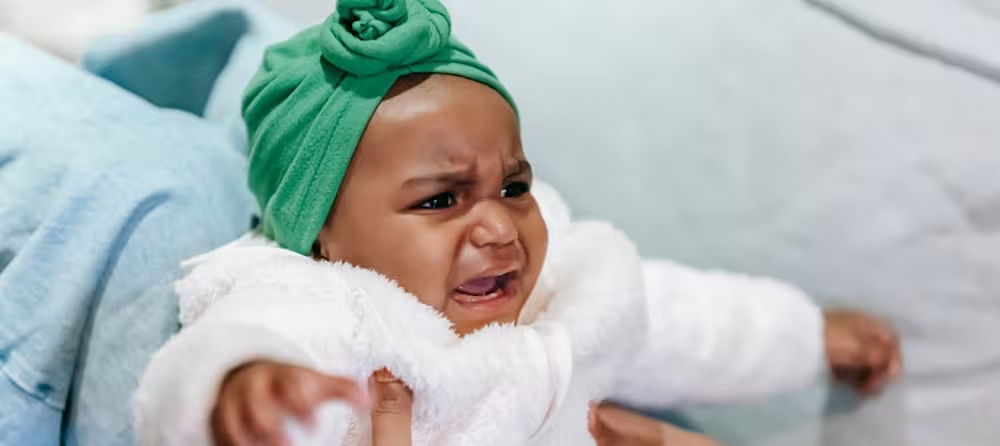How to manage the transition from three naps to two naps
Updated Dec 29, 2025
Up-to-date

If there’s one constant in parenting, it’s change! Once your baby’s circadian rhythm is fully developed around 6 months old, sleep tends to organize into three semi-predictable naps. Just as you get used to it, though, your infant will be ready to drop that third nap and transition to just two naps per day. Get ready for some quick tips to manage this shift in sleep patterns.
When do babies drop the third nap?
Most babies are ready to fully drop that third nap by 8 - 9 months old. As with all nap transitions, some babies will drop the nap on the earlier side, and others will drop it on the later side. It’s very common for 6 and 7 month olds to start resisting the last nap of the day, which can make it tough to stick to a three-nap schedule each day.
If your baby is fighting naps, it may be because they’re outgrowing the wake windows of a three-nap schedule, which are typically 2 - 2.75 hours long. In order to fully transition to a two-nap schedule, babies will need to be able to comfortably stay awake for about 3 - 3.5 hours at a time. With all this talk about dropping naps, you may be asking yourself, "?" It depends!
Which nap gets dropped?
When babies transition to a two-nap schedule, the third nap (which is typically a shorter catnap of 30 - 45 minutes) will get dropped. The remaining two naps should be spread evenly throughout the day, and bedtime usually needs to be moved earlier.
Three-nap sample schedule
Before the nap transition, a three-nap schedule for an 8 month old might look like this:
| Morning rise | 7:00 AM |
| 1st nap | 9:15 AM - 10:30 AM (1.25 hour nap) 2.25 hours of awake time before 1st nap |
| 2nd nap | 1:00 PM - 2:15 PM (1.25 hour nap) 2.5 hours of awake time before 2nd nap |
| 3rd nap | 4:45 PM - 5:15 PM (30 minute nap) 2.5 hours of awake time before 3rd nap |
| Get ready for bed | 7:00 PM |
| Asleep | 8:00 PM 2.75 hours of awake time before bedtime |
Note: Sleep needs vary by child, and this chart should be viewed as an example.
Two-nap sample schedule
After dropping the third nap, the new two-nap schedule might look like this, with later naps, longer wake periods, and an earlier bedtime:
| Morning rise | 7:00 AM |
| 1st nap | 9:45 AM - 11:15 AM (1.5 hour nap) 2.75 hours of awake time before 1st nap |
| 2nd nap | 2:30 PM - 4:00 PM (1.5 hour nap) 3.25 hours of awake time before 2nd nap |
| Get ready for bed | 6:30 PM |
| Asleep | 7:30 PM 3.5 hours of awake time before bedtime |
Note: Sleep needs vary by child, and this chart should be viewed as an example.
Signs that your baby is ready to transition to two naps
As your baby gets ready to transition from three naps to two, it’s common to see the following signs:
Resisting naps, especially the third one
Skipping naps entirely
Taking shorter-than-usual naps
Suddenly waking early and/or split nights (where a child can’t sleep for long periods during the middle of the night)
If your child is regularly getting less than 10 hours of sleep per night on a three-nap schedule, transitioning to two naps may help lengthen night sleep.
Strategies to manage this transition
1. Lengthen wake windows
Don’t drop the nap too early! Resisting naps is very common as babies need more awake time to become sufficiently tired. If your baby is under 8 months old and/or has difficulty handling the two-nap schedule, you can continue to offer three naps, but stretch out those wake periods.
Rather than drop the third nap before your baby’s ready, try lengthening the wake windows so that more sleep pressure can build before the final nap of the day. This can make a catnap more likely and prevent bedtime from being shifted too early.
For example, if your has been skipping the third nap, but can’t yet comfortably handle the longer wake windows for the two-nap schedule, you might try lengthening the wake window before the third nap. That might look like this:
| Morning rise | 7:00 AM |
| 1st nap | 9:15 AM - 10:30 AM (1.25 hour nap) 2.25 hours of awake time before 1st nap |
| 2nd nap | 1:00 PM - 2:00 PM (1 hour nap) 2.5 hours of awake time before 2nd nap |
| 3rd nap | 4:45 PM - 5:15 PM (30 minute nap) 2.75 hours of awake time before 3rd nap |
| Get ready for bed | 7:00 PM |
| Asleep | 8:00 PM 2.75 hours of awake time before bedtime |
Note: Sleep needs vary by child, and this chart should be viewed as an example.
2. Offer the third nap “on the go”
As babies outgrow the three-nap wake windows, it’s common for them to fight the last catnap. This can make dinner time especially challenging if you need to manage a cranky infant while feeding an older sibling.
We can’t “make” babies fall asleep, but we can get creative. If your baby is going to have a hard time staying awake until a reasonable bedtime (typically no earlier than 6:00 PM), consider offering a nap “on the go” while you both get some fresh air. Keep in mind that the American Academy of Pediatrics [] recommends transferring babies to a flat, firm surface if they fall asleep in a stroller, infant carrier, or sling.
3. Move bedtime earlier after a skipped nap
Despite our best efforts, there will be some days when your baby won’t take all three naps and will struggle to stay awake until their normal bedtime. As much as we like consistency, some flexibility is essential when dealing with nap transitions. Move bedtime 30 - 60 minutes earlier as needed when your baby skips a nap.
While we want to minimize overtiredness (which can lead to increased night wakings and early waking), we also don’t want to offer bedtime so early that it leads to other sleep issues. Aim to find a balance and avoid bedtimes before 6:00 PM, as that can create an early waking cycle too.
For example, if your 6 month old normally goes to bed at 7:15 PM, but skips their last nap, you might end up with a day that looks like this:
| Morning rise | 6:30 AM |
| 1st nap | 8:30 AM - 9:45 AM (1.25 hour nap) 2 hours of awake time before 1st nap |
| 2nd nap | 12:00 PM - 1:30 PM (1.5 hour nap) 2.25 hours of awake time before 2nd nap |
| 3rd nap | 4:00 PM nap SKIPPED |
| Get ready for bed | 5:45 PM |
| Asleep | 6:15 PM 4.75 hours of awake time before bed |
The last wake window will still be too long to be comfortable but is preferable to the typical 7:15 PM bedtime. Ideally, your baby’s night sleep will lengthen, and you can try again for three naps the following day.
Takeaway
Most babies drop the third nap around 8 - 9 months: Some show readiness earlier, others later. Nap transitions are developmental, not strictly age-based.
The third nap is usually the first to go: It’s typically a short catnap, and as wake windows lengthen, it becomes harder to fit in without pushing bedtime too late.
Nap resistance doesn’t always mean it’s time to drop a nap: For younger babies, stretching wake windows or offering a brief catnap can help bridge the gap.
Earlier bedtimes are often part of the transition: When a nap is skipped, moving bedtime up can help prevent overtiredness and protect nighttime sleep.
This phase is temporary (even when it’s messy): Short naps, early waking, and schedule shuffling are common during this nap transition, but consistency and flexibility go a long way.
Three to two nap transition FAQ
Share article:
Note: The content on this site is for informational purposes only and should not replace medical advice from your doctor, pediatrician, or medical professional. If you have questions or concerns, you should contact a medical professional.










